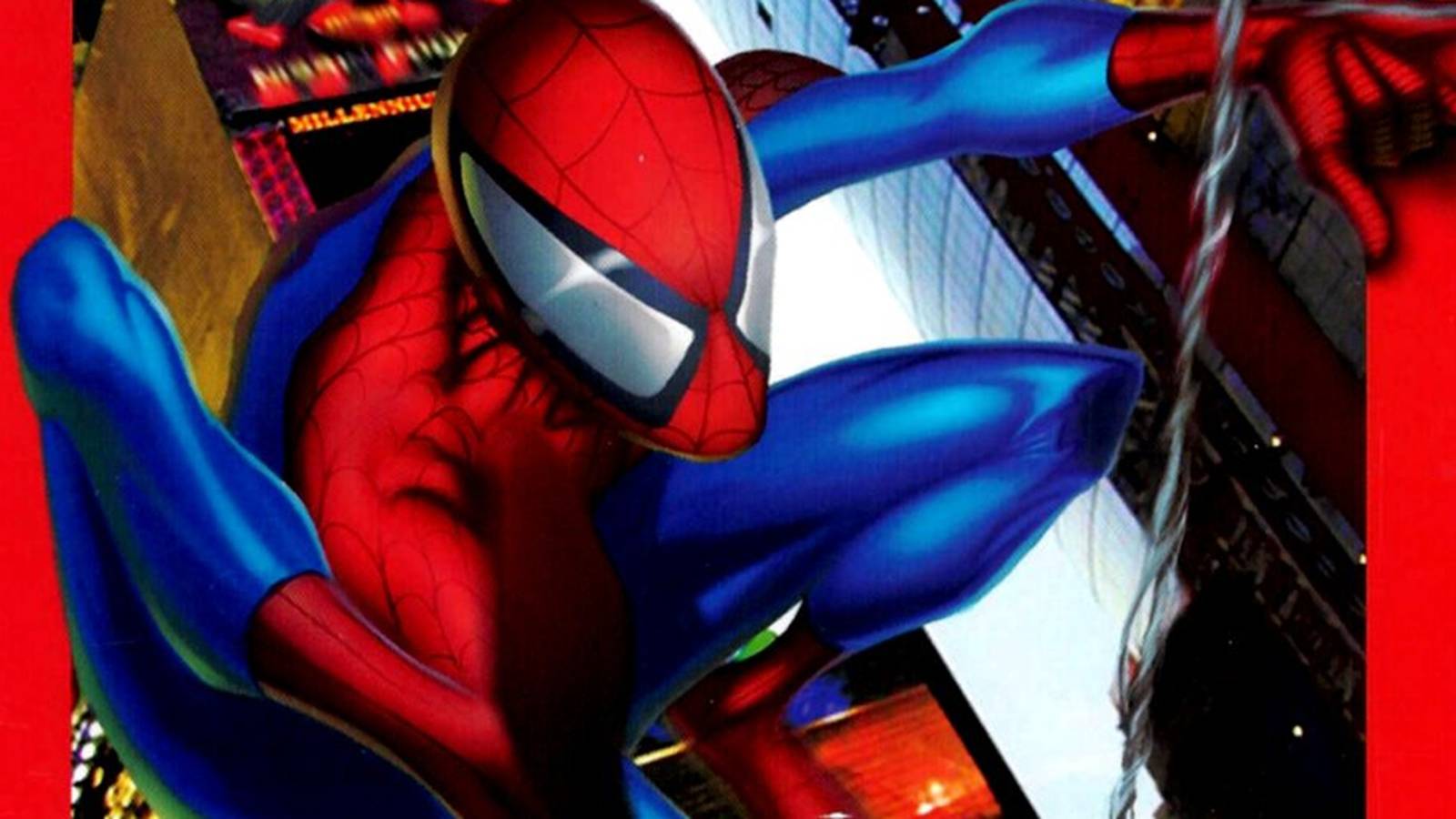In every Look Back, we examine a comic book issue from 10/25/50 years ago (plus a wild card every month with a fifth week in it). This time around, we head to September 2000 to see the launch of Ultimate Spider-Man.
It is so difficult to understand this, when we are sitting in a comic book marketplace whose biggest hits are DC’s Absolute Universe titles, and Marvel’s Ultimate Universe title, but when the original Ultimate Universe was announced, it was very much NOT something that people were looking forward to. A little over a year earlier, John Byrne had done a “reimagined” Spider-Man origin story in Spider-Man: Chapter One, and while that series didn’t do POORLY, it wasn’t well-enough received for Marvel to fully commit to it, and so it was sort of swept under the rug. Similarly, Marvel had tried something called Marvel Universe, which was the idea of doing new stories in a continuity-free interconnected comic book line…
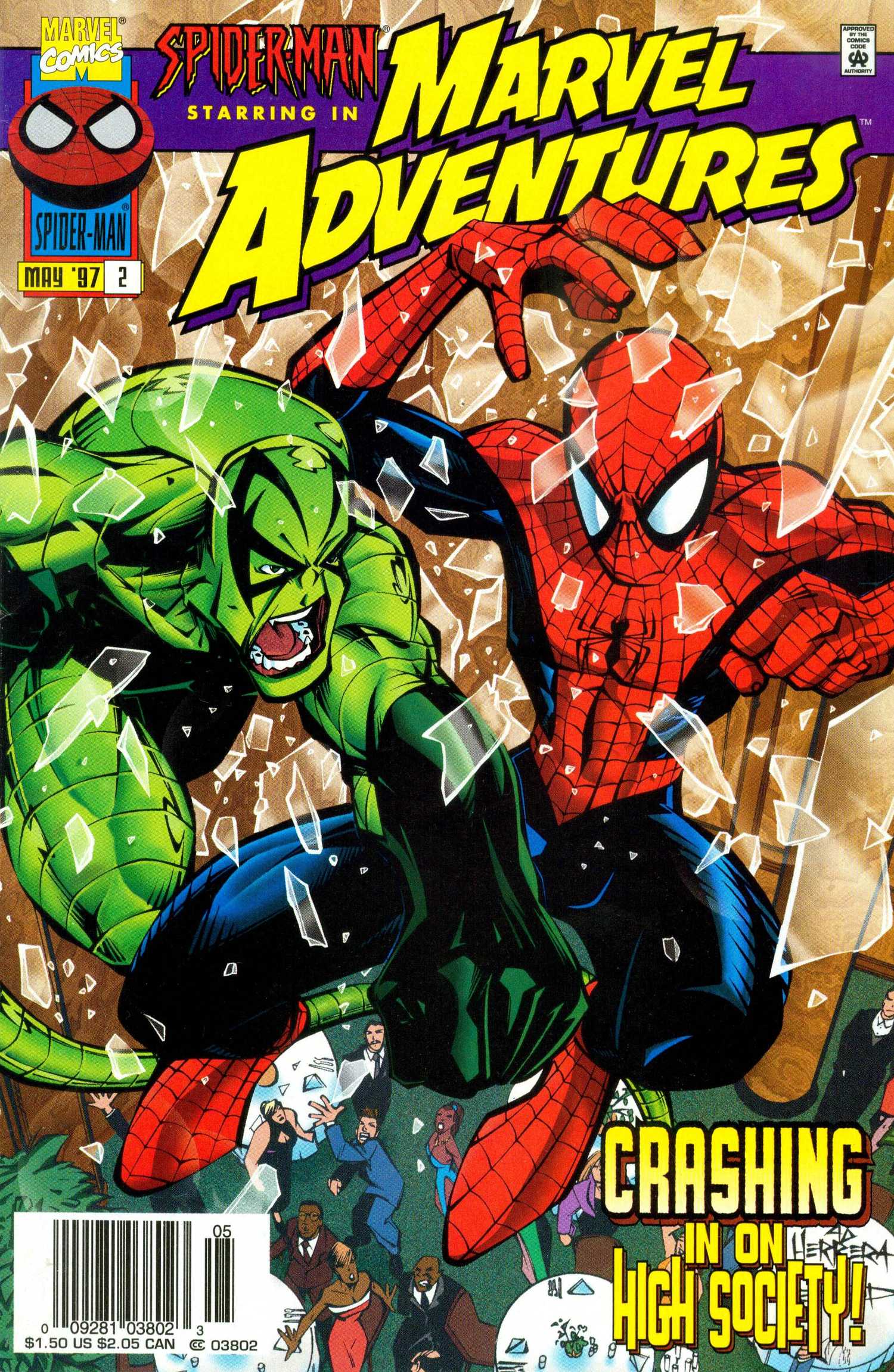
Image via Marvel
The concept was basically dead on arrival. So when, a couple of years later, Marvel wanted to try AGAIN with a continuity-free comic book line to “reestablish” its main superheroes, fans were extremely skeptical, and that’s why it was so amazing when Ultimate Spider-Man #1 launched in October 2000 (by Brian Michael Bendis, Bill Jemas, Mark Bagley, and Art Thibert), and was a giant, company-altering, hit.
How did Ultimate Spider-Man stand out from the crowd?
Amusingly, one of the things that Brian Michael Bendis did in this revamped origin was something that John Byrne had also worked on in “Chapter One,” which was to tie Norman Osborn into Spider-Man’s origins via the science experiment that created the spider that bit Peter Parker and turned him into Spider-Man (Byrne went one step further and had the accident that gave Peter his powers also be the same one that gave Doctor Octopus his robotic arms).
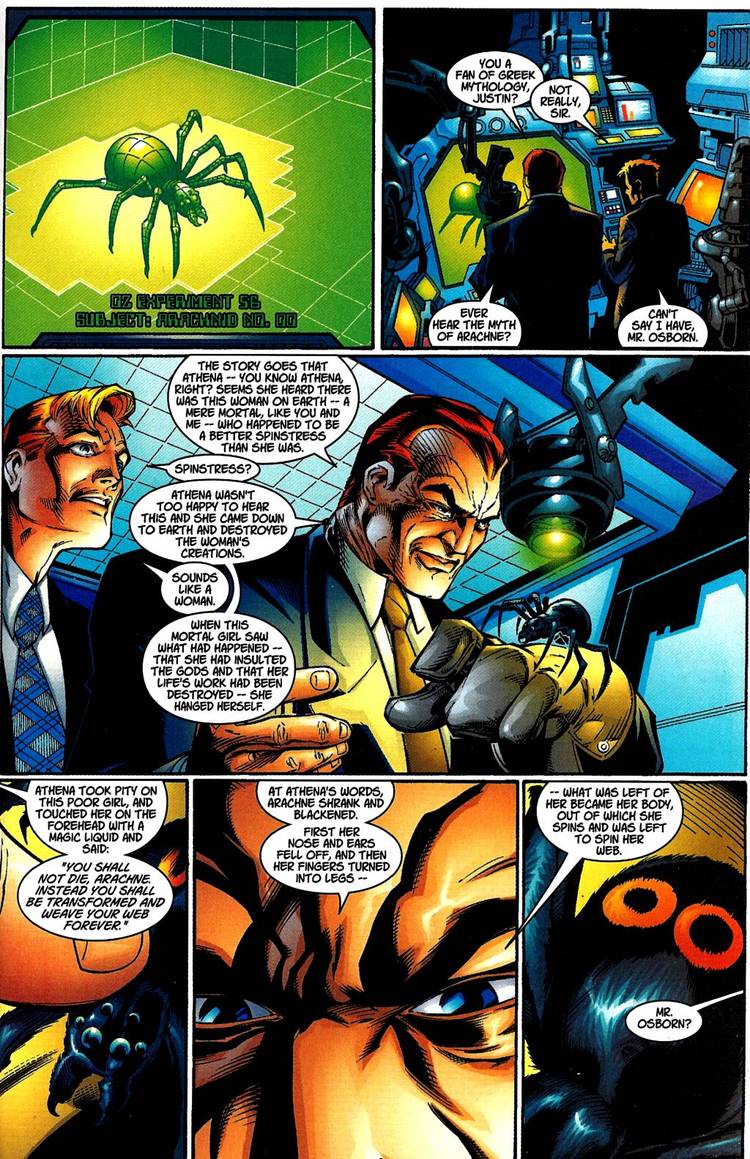
Image via Marvel
It’s a strong concept, as if you can tie your main villain in with your main hero, it’s PROBABLY a good idea, if you can do it seamlessly. If not, it’ll look super hokey, but if it can be done smoothly, it helps out a lot.
The other major thing that Bendis did was to bring all of the characters from Peter’s main supporting cast, and bring them into high school, which meant that Mary Jane Watson was now Peter’s high school classmate, instead of not meeting him until Peter was in college…
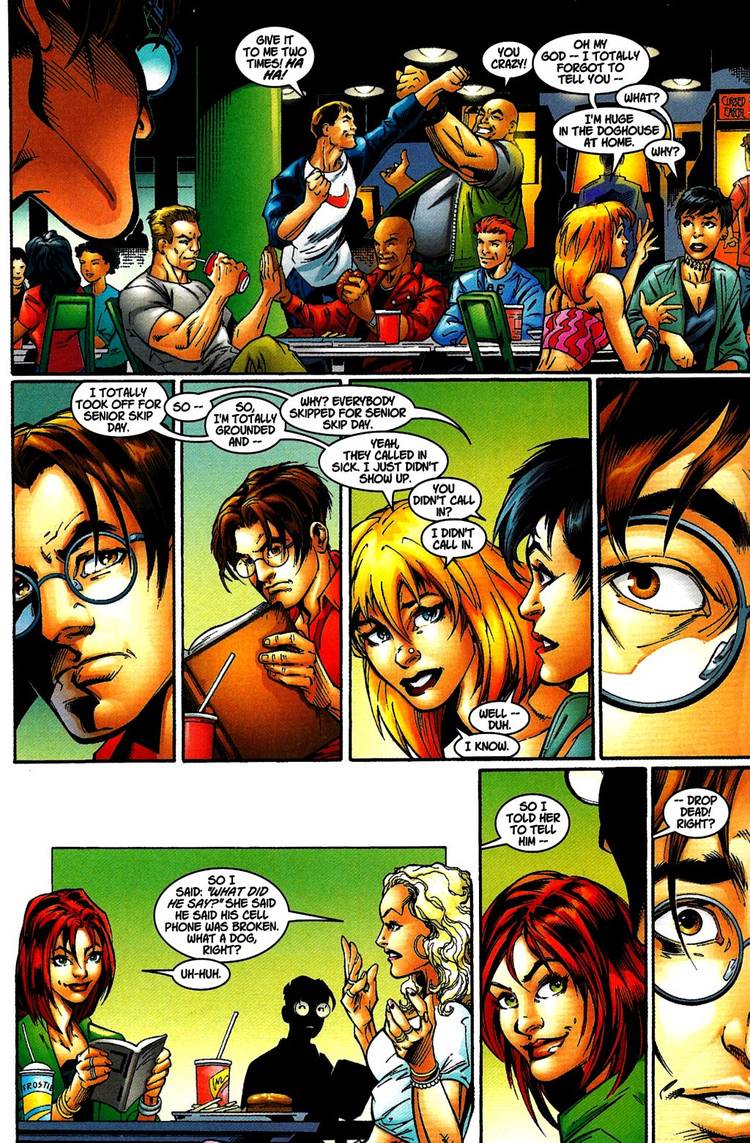
Image via Marvel
When you look at all of these plot points, I’m sure you’ll think of two things. 1. “Wow, all of these changes make a lot of sense,” and, “Wow, this is just what Sam Raimi ended up doing on Spider-Man in 2002.” Sam Raimi was heavily influenced by the John Romita/Stan Lee era of Amazing Spider-Man, but it seems plain that Raimi took note of how Bendis adapted those stories, and did a similar thing (have them all meet in high school, and spotlight the relationship between Peter and Harry, with Harry the “screwup” rich kid whose father is more impressed with Peter). As I noted in the parenthetical, the Peter/Harry relationship really felt fresh…
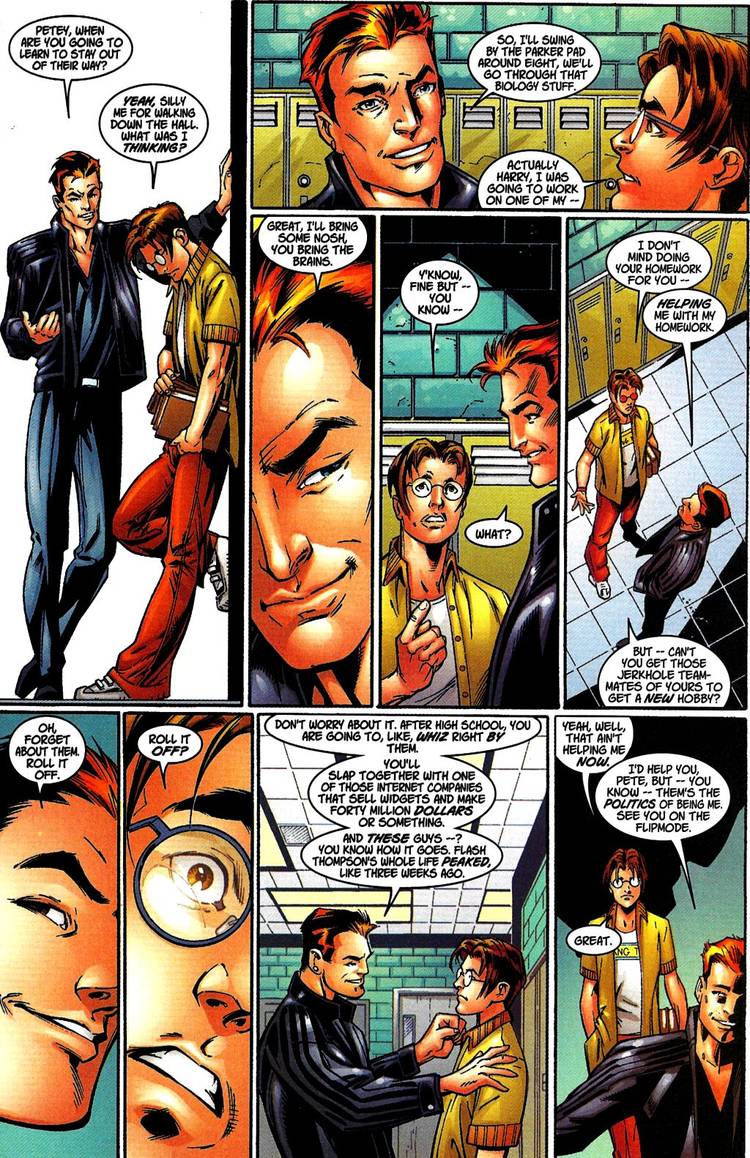
Image via Marvel
Mark Bagley was already a legendary Spider-Man artist, but he also did such a great job on this series, doing excellent design work, and some awesome action stuff. Bendis pointedly took away thought balloons, and tried for more “realistic” dialogue (although it is interesting that the dialogue isn’t quite “peak Bendis” yet, as it seems like he is sort of wading into the water slowly with the dialogue. It’s really good, either way).
How did Ultimate Spider-Man alter Spider-Man’s origin?
So the genetically engineered spider bites Peter…
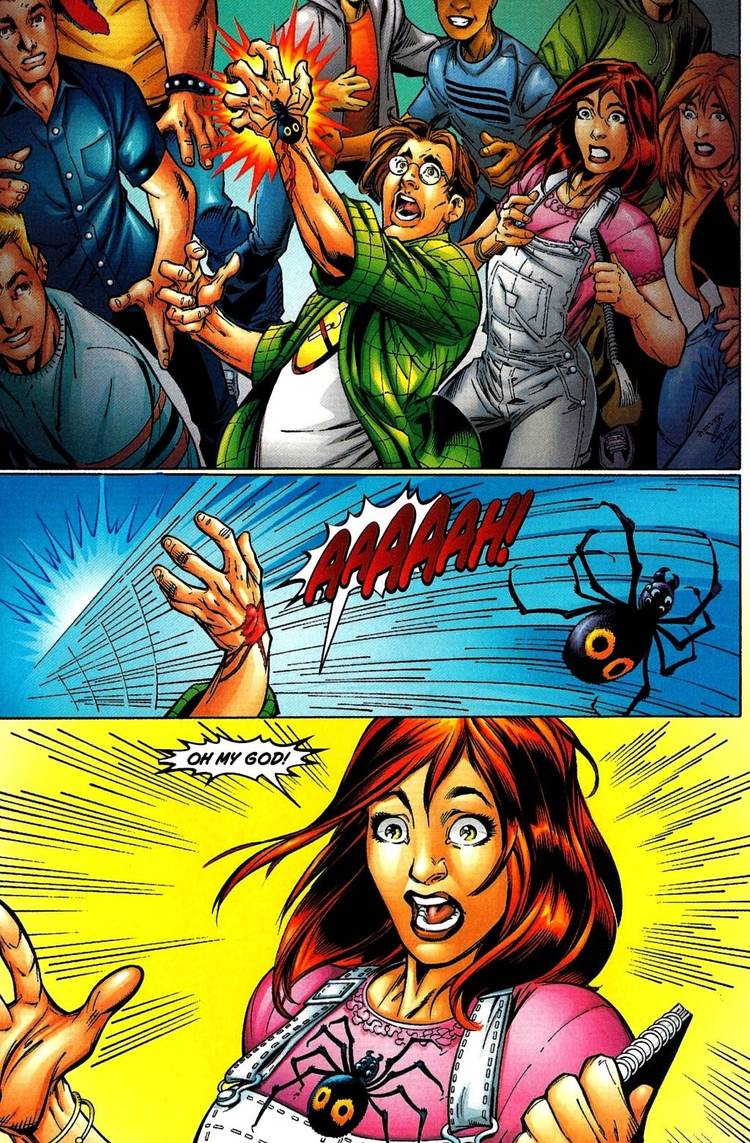
Image via Marvel
Osborn believes that Peter is likely being killed by the spider’s effects, so he orders someone to kill him NOW, so that Peter won’t cause any trouble for him, but when the assassin tries to kill Peter, he avoids the attack (this is the Ultimate twist of the classic scene from Spidey’s original origin where he avoids getting hit by a car)…
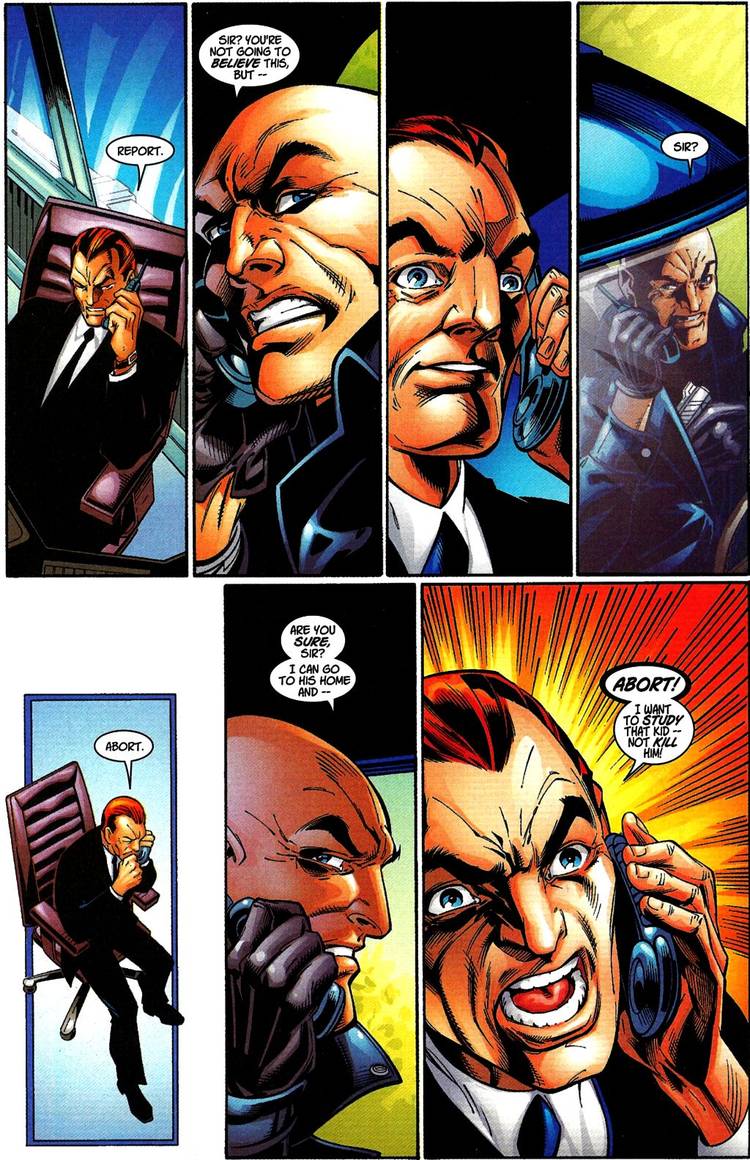
Image via Marvel
And then the end of the issue shows just HOW different this origin is going to be. Already, what was an 11-page origin story has already been stretched out so that Uncle Ben isn’t even DEAD yet, and Peter is far from getting his own costume, instead, we just see Peter, who had become a bit of a disaffected youth from being picked on so much, is able to actually show his true self and talk about how cool this is…
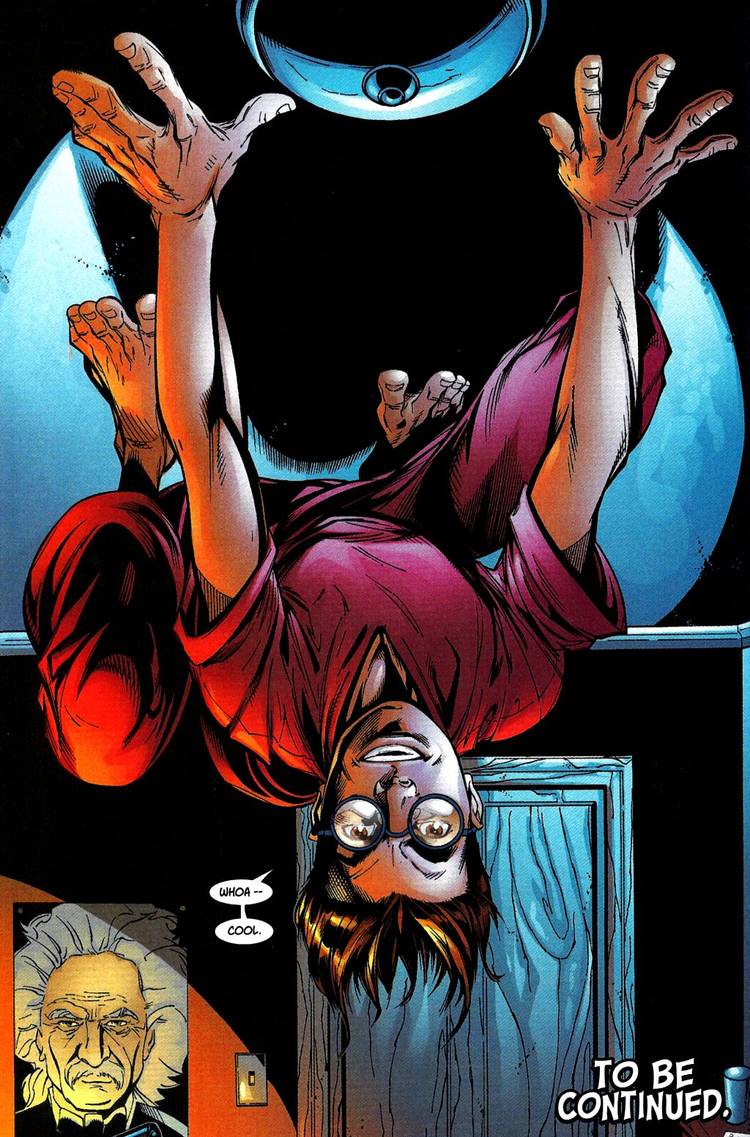
Image via Marvel
Being able to plan out the story ahead of time was huge for Bendis, as he was able to plant SO MANY excellent seeds that when they all start paying off, it worked really nicely. But really, right off the bat, this was a very cool first issue, and readers could TELL how cool it was, which was a VERY different vibe than past attempts to do something like this, and soon, the Ultimate line would grow, and it would influence the regular Marvel Universe and, of course, the Marvel Cinematic Universe, in a big way.
If you folks have any suggestions for October (or any other later months) 2015, 2000, 1975 and 1950 comic books for me to spotlight, drop me a line at brianc@cbr.com! Here is the guide, though, for the cover dates of books so that you can make suggestions for books that actually came out in the correct month. Generally speaking, the traditional amount of time between the cover date and the release date of a comic book throughout most of comic history has been two months (it was three months at times, but not during the times we’re discussing here). So the comic books will have a cover date that is two months ahead of the actual release date (so October for a book that came out in August). Obviously, it is easier to tell when a book from 10 years ago was released, since there was internet coverage of books back then.

